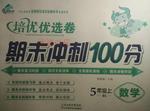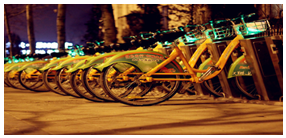12.I travel a lot,and I find out different"styles"(風格)of directions every time I ask"How can I get to the post office?"
Foreign tourists are often confused(困惑)in Japan because most streets there don't have names; in Japan,people use landmarks(地標)in their directions instead of street names.For example,the Japanese will say to travelers,"Go straight down to the corner.Turn left at the big hotel and go past a fruit market.The post office is across from the bus stop."
In the countryside of the American Midwest,there are not usually many landmarks.There are no mountains,so the land is very flat;in many places there are no towns or buildings within miles.Instead of landmarks,people will tell you directions and distances.In Kansas or Iowa,for example,people will say,"Go north two miles.Turn east,and then go another mile."
People in Los Angeles,California,have no idea of distance on the map; they measure distance in time,not miles."How far away is the post office?"you ask."Oh,"they answer,"it'is about five minutes from here."You say,"Yes,but how many miles away is it?"They don't know.
It's true that a person doesn't know the answer to your question sometimes.What happens in such a situation?A New Yorker might say,"Sorry,I have no idea."But in Yucatan,Mexico,no one answers"I don't know."People in Yucatan believe that"I don't know"is impolite.They usually give an answer,often a wrong one.A tourist can get very,very lost in Yucatan!
32.When a tourist asks the Japanese the way to a certain place,they usuallyD.
A.describe the place carefully
B.show him a map of the place
C.tell him the names of the streets
D.refer to recognizable buildings and places
33.What is the place where people measure distance in time?B
A.New York B.Los Angeles C.Kansas D.Iowa
34.People in Yucatan may give a tourist a wrong answerC.
A.to save time B.to cheat him C.to be polite D.for fun
35.What can we infer from the text?A
A.It's important for travelers to understand cultural differences.
B.It's useful for travelers to know how to ask the way properly.
C.People have similar understandings of politeness.
D.New Yorkers are generally friendly to visitors.
分析 本文講述了不同地區的人對游客問路的回答不同,所以對于旅行者來說,最好事先了解當地的習慣.
解答 32-35.DBCA
32.D 考查細節理解.根據文中所舉的例子"Go straight down to the corner.Turn left at the big hotel and go past a fruit market.The post office is across from the bus stop"可知,當游客問日本人去某地的路,他們通常會指出參照性的建筑物.故選D.
33.B 考查細節理解.根據"People in Los Angeles,California,have no idea of distance on the map; they measure distance in time,not miles"可知,洛杉磯的人會用時間來說明路程.故選B.
34.C 考查細節理解.根據"People in Yucatan believe that"I don't know"is impolite.They usually give an answer,often a wrong one"可知,當地人不會不回答問題,而是會出于禮貌地回答一個錯誤的方向.故選C.
35.A 考查推理判斷.根據文章內容可知,不同地區的人對于問路人的回答不同,所以對于旅行者來說,了解文化差異是很重要的.故選A.
點評 閱讀理解考察學生的細節理解和推理判斷能力,做細節理解題時一定要找到文章中的原句,和題干進行比較,再做出正確的選擇.在做推理判斷題不要以個人的主觀想象代替文章的事實,要根據文章事實進行合乎邏輯的推理判斷.



 金牌教輔培優優選卷期末沖刺100分系列答案
金牌教輔培優優選卷期末沖刺100分系列答案

